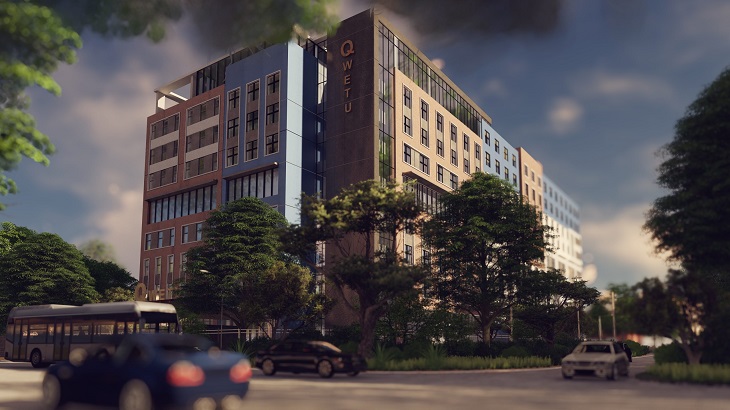It’s a story as old as, well, the pandemic; industries going through disruption to adapt to a world that has in some instances remained the same and in other instances, further from it. Hybrid working continues to fuel adaption in real estate, particularly commercial workspace, impacting the way facility managers and building owners are planning the workplace.
As an example, the traditional concept of a conference/meeting room is being replaced by a ‘connected meeting room’ where people can come together and be virtually connected to any location.
The design of these spaces will increasingly be put under scrutiny, evolving beyond just a room with a screen, a webcam, and an HDMI cable. It requires an activity-based design, therefore, how are people going to use and interact within these meeting rooms in the future?
It is developments like the above that are giving way to the concept of Phygital, which in essence represents the fusion of physical and digital elements to orchestrate building use based on user behavioral patterns. It is reshaping the way we perceive and utilize corporate space.
Breathing new life into the building
In prime real estate spots like Westlands and Kilimani, office blocks and other corporate spaces are standing empty or underutilized. It’s hard to believe that there’s a surplus of “stock” in such a sought-after area.
However, all is not lost; these spaces have a new lease (literally and figuratively speaking) on life if merged with advanced technology, influenced by human-centric design i.e. Phygital.
The integration of technology into office spaces provides tangible benefits, including enhanced occupant comfort and environmental sustainability. For instance, real-time data provides building operators with information on heating, cooling, fresh air, and lighting consumption.
Similarly, smart technologies provide building occupants with valuable data on workspace availability, allowing the flexibility to utilize workspace when available, saving on daily commutes for example.
Moreover, buildings that employ a Phygital approach can optimize air temperature, lighting, and air quality to provide the optimum environment for occupant comfort, productivity, and wellbeing.
Another important and certainly not overlooked benefit is security. There’s a lot to be said for buildings that make their occupants feel safe through measures such as environmental controls and security like integrated access control, surveillance, and emergency response.
A safe, reliable workspace that not only supports business continuity but also workers’ resilience should therefore be a key strategic priority moving forward, especially given the evolving needs of organizations. Why? For one, people will perform better if they aren’t just keeping their heads above water.
Today’s Building Management Systems (BMS) play an integral role in the Phygital concept, becoming increasingly intelligent and in tune with workplace well-being. Shortly, we will for example see BMSs creating personal microclimates for different areas of an office, through employee voice activation or the use of personal applications.
Thanks to technology, buildings are getting smarter year on year. No longer just bricks and mortar, they are becoming automated and responsive, adapting to their users and the environment around them. This trend will undoubtedly continue for the years to come.
Related Content: New Tech In Ceiling Set To Revolutionize The Building Industry
By Chetan Ratna, Buildings Segment Lead at Schneider Electric East Africa











